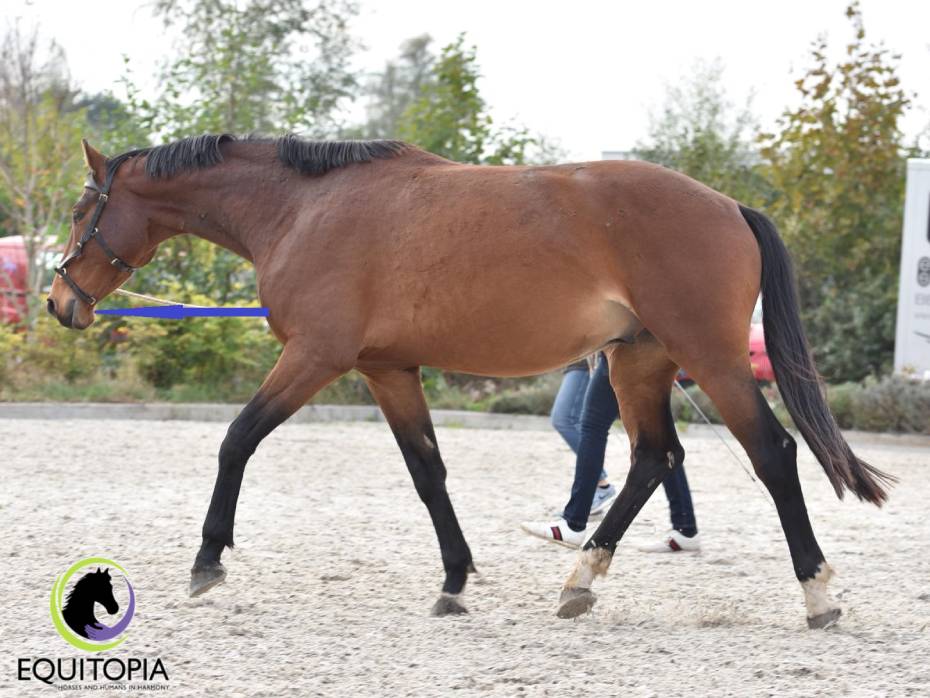WHERE IS THE NOSE OF A HORSE IN VERTICAL BALANCE?
DR KARIN LEIBBRANDT
One of the most difficult things to achieve and sustain in training your horse is the length in the neck. The length doesn’t mean how low a horse goes but the distance between his nose and his chest.
A horse with a correct length in the neck has its nose in front of the vertical. Only a horse in vertical balance can place his nose in front of the vertical. If the horse is crooked or is falling on the forehand he can not do that, because he needs his head and neck to compensate for the lack of balance. Keeping enough length in the neck means that the horse has to carry his heavy head far away from his body. In order to be able to do this, he needs core-stability and enough strength. If he is out of balance he has to use his strength for compensating instead of lengthening the neck.
The nose of a horse in vertical balance is in front of the vertical, but there is another important aspect. A horse in vertical balance, but without a correct lateral flexion (sidebend) in the core places his nose in front of the outside front leg. (See picture on left below, where the horse’s nose is in front of outside leg).

Most riders learn that the horse should look slightly inward. And that is correct, but this is a few steps later in the training system. If the horse has a correct lateral flexion in the core, he will place his nose exactly in front of the sternum, and that way for the riders it looks as if the horse is slightly looking inward, but this is actually a subtle lateral flexion equally distributed over the entire spine. The rider can see a little bit of the inside eye. (See picture on the right above, where the nose is in front of the sternum).
PACING YOUR TRAINING
We shouldn’t burden a young horse, a reschooling horse or a rehab horse with lateral flexion in the first stages of training. It is simply too complicated and he lacks strength and stability. We just start with the vertical balance and this means that the nose is in front of the vertical and in front of the outside front leg, on straight lines as well as on circles.
To find out more about compassionate training techniques and all the biomechanics behind a balanced horse, please visit www.equitopia.com for a video course and book on this subject. This will provide you with all the details you need to change your horse’s life and let him experience comfort and confidence during the training. In the past 17 years that I’ve been training horses and riders, I could always tell when a combination had found its balance – the snorting of the horse, the effortlessly moving horse and the smile on the face of the rider!






